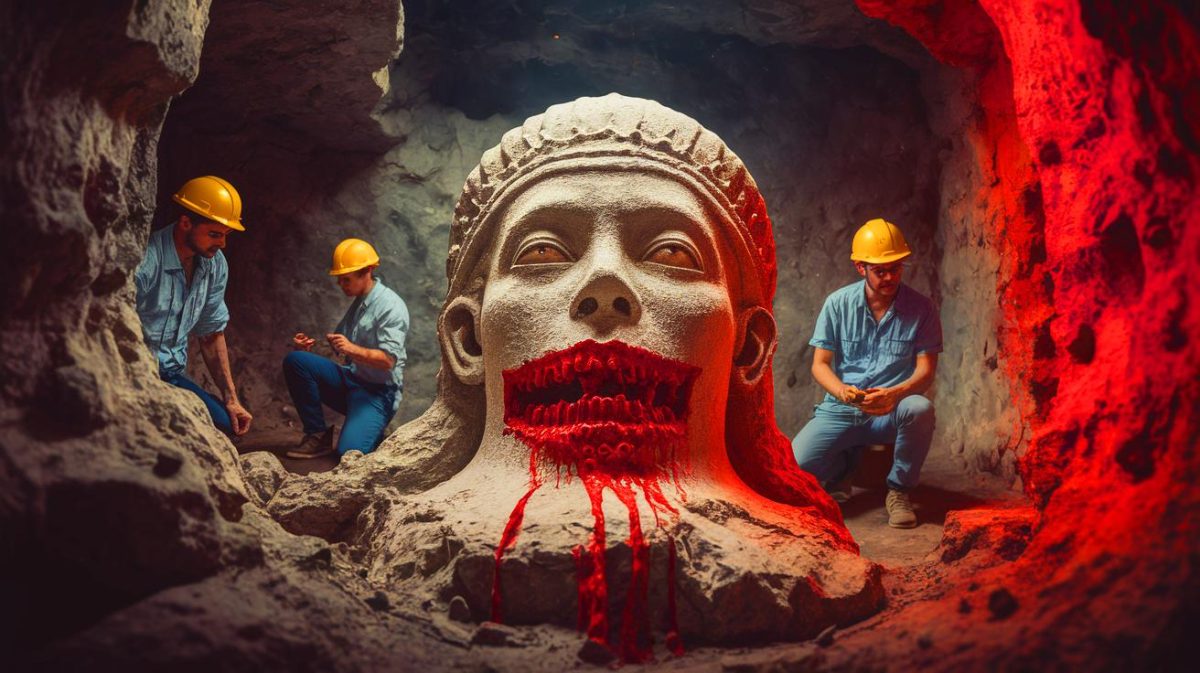| IN A NUTSHELL |
|
In the far reaches of northwestern China, a discovery of profound significance has emerged from an ancient cemetery in Turpan. There, archaeologists have uncovered the tomb of a woman known as the “Red Princess,” a name derived from an unusual find—traces of a toxic, red substance on her teeth. This substance, identified as cinnabar, intrigues researchers due to its historical importance and inherent danger. The presence of cinnabar on teeth is unprecedented, raising questions about the cultural practices of this enigmatic woman who lived over two millennia ago.
An Exceptional Discovery
In a remarkable archaeological breakthrough, the grave of a woman dating back more than two thousand years was unearthed in Turpan, located in northwestern China. Published in the February issue of Archaeological and Anthropological Sciences, the study reveals this woman’s teeth were painted with a mysterious red substance. Detailed chemical analysis identified this substance as cinnabar, a mineral revered by ancient civilizations for its vibrant color and spiritual significance, yet notorious for its toxic properties due to its mercury and sulfur content.
What makes this discovery particularly exceptional is its uniqueness: this is the first known instance of cinnabar being used as a pigment to dye teeth in antiquity, as highlighted by the researchers. The cinnabar was applied using a protein-based binder, suggesting a deliberate and skillful application. This finding not only sheds light on unknown dental practices but also highlights the complex interplay of cultural, aesthetic, and spiritual values in ancient societies.
A Woman from an Unknown People
The use of cinnabar, prevalent in ceremonial contexts since at least the 9th millennium BC, has never before been documented on teeth. This woman, the “Red Princess,” belonged to the Gushi people, a lesser-known pastoral equestrian culture where women were known to ride horses. Radiocarbon dating places the tomb’s origin between 2200 and 2050 years before the present, a time when the Silk Road thrived, facilitating the trade of valuable goods, including cinnabar.
The young woman, aged between 20 and 25, was part of a dynamic trade network that connected distant regions, allowing for the exchange of both material goods and cultural practices. The presence of cinnabar on her teeth suggests a distinctive cultural significance, possibly indicating status, religious beliefs, or aesthetic preferences. This finding enriches our understanding of the Gushi people and their interactions along the Silk Road.
The Red Princess
Dubbed the “Red Princess of the Silk Road” by researchers, this woman’s story parallels that of the Maya “Red Queen,” whose body was similarly adorned with cinnabar. The principal investigator, Qian Wang, a professor at Texas A&M University College of Dentistry, suggests that the cinnabar could symbolize social status, aesthetic enhancement, shamanistic practices, or a combination of these factors.
This study reveals two critical insights: firstly, the paramount significance of the color red in both the spiritual and everyday lives of ancient peoples; secondly, the profound impact of the Silk Road in disseminating knowledge and materials across vast distances. These insights underscore the complex cultural tapestry of the time, where trade routes not only transported goods but also ideas and customs.
As we delve into the mysteries surrounding the “Red Princess,” we are left to ponder the motivations behind such a unique practice. What other hidden stories might the Silk Road, with its rich history of cultural exchange, continue to hold? Could further research unveil more about the lives and beliefs of those who once thrived along this ancient trade route?
Did you like it? 4.6/5 (25)






Wow, cinnabar on teeth! Were they trying to make a fashion statement or ward off evil spirits? 🤔
This is mind-blowing! I wonder if they knew about the toxicity back then. 😲
Why would anyone use a toxic substance on their teeth? Seems dangerous!
Isn’t cinnabar just mercury sulfide? How did they apply it safely? 🤨
Fascinating discovery! Thanks for sharing this incredible find. 😊
Maybe the Red Princess was an ancient influencer with her unique style! 😂